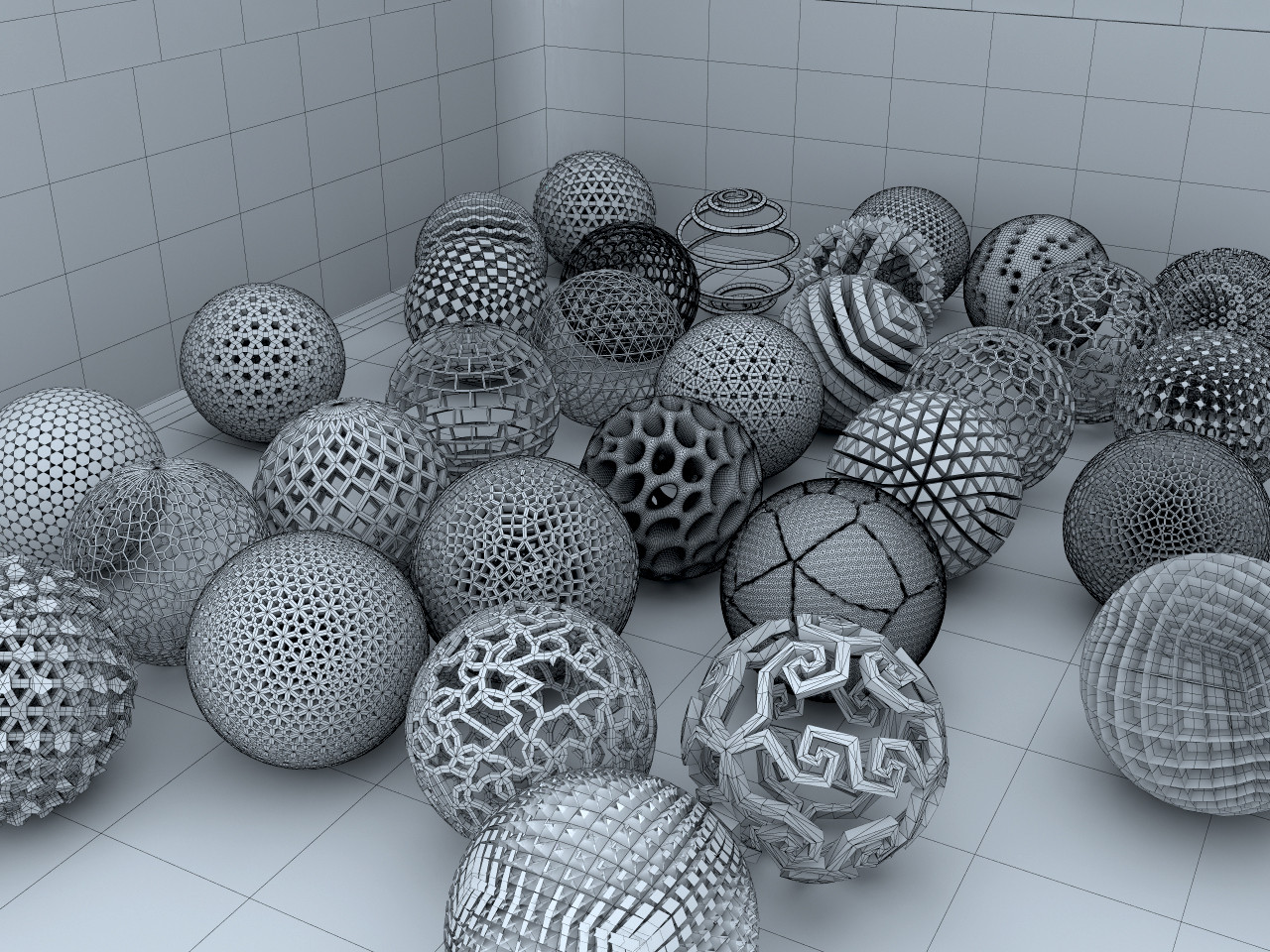HOME | DD
 LuxXeon — Spherical Anthology (wireframe version)
LuxXeon — Spherical Anthology (wireframe version)

Published: 2012-11-17 22:48:58 +0000 UTC; Views: 2876; Favourites: 40; Downloads: 87
Redirect to original
Description
A couple people have asked if they could view the wireframe version of my last render, Spherical Anthology , to examine a little bit how the topology and tessellations of some of the spheres were modeled. I wasn't sure at first how to do that besides taking a screen capture of how the unrendered scene looks in the 3dsmax viewport. However, I found out that MentalRay, the render engine that comes with 3dsmax, has a really cool clay shader with an edge map option that accurately renders the actual edges of your underlying mesh as a texture. I rendered this version of the scene using that technique, so now anyone can see exactly how the topology of each sphere looks in wireframe, without any materials in the scene or camera effects. The really dense edges you see on some of the spheres is due to mesh-smoothing/subdivision obviously, but most of the shapes did not require any further smoothing to achieve the desired end result.Click the image to enlarge, if you want to see some of the smaller details in the wireframe.
You could see the original render here .
Related content
Comments: 13

hi i am waqar, i really liked what u did , i have a similar object, and i really dont know how to model it, can u please help , can u please show us how u modeled them>
👍: 0 ⏩: 0

No plugins were used that I recall, only standard Max modifiers, and Graphite tools. Oh wait... I did use the "Fracture Voronoi" free maxscript to create the voronoi cracking in that particular sphere.
👍: 0 ⏩: 0

This amazes me. Thanks for the wireframe. I still don't know how you did all of these.
👍: 0 ⏩: 0

































